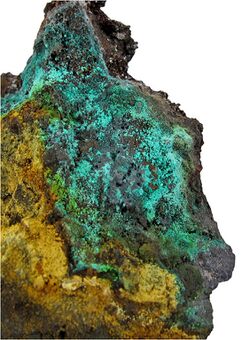Chemistry:Niedermayrite
From HandWiki
Short description: Sulfate mineral
| Niedermayrite | |
|---|---|
 | |
| General | |
| Category | Sulfate mineral |
| Formula (repeating unit) | Cu4Cd(SO4)2(OH)6·4H2O |
| Strunz classification | 7.DD.30 |
| Crystal system | Monoclinic |
| Crystal class | Prismatic (2/m) (same H-M symbol) |
| Space group | P21/m |
| Unit cell | a = 5.543(1), b = 21.995(4) c = 6.079(1) [Å]; β = 92.04(3)°; Z = 2 |
| Identification | |
| Color | Bluish green |
| Crystal habit | Platy euhedral crystals and as green crusts |
| Cleavage | Perfect on {010} |
| Tenacity | Brittle |
| |re|er}} | Vitreous |
| Streak | White |
| Diaphaneity | Transparent |
| Specific gravity | 3.292 |
| Optical properties | Biaxial (-) |
| Refractive index | nα = 1.599 - 1.619 nβ = 1.642 nγ = 1.661 |
| Birefringence | δ = 0.062 |
| 2V angle | Measured: 84° |
| References | [1][2] |
Niedermayrite is a rare hydrated copper cadmium sulfate hydroxide mineral with formula: Cu4Cd(SO4)2(OH)6·4H2O. It crystallizes in the monoclinic system and occurs as encrustations and well formed vitreous blue-green prismatic crystals. It has a specific gravity of 3.36.
Niedermayrite was named for Gerhard Niedermayr (born 1941), an Austrian mineralogist. It was first described in 1998 from a mine in the Lavrion District, Attica, Greece. It is also reported from the Ophir District, Tooele County, Utah.[1] The environment is in brecciated marble. The cadmium dominant analogue of campigliaite.
References
- ↑ 1.0 1.1 Niedermayrite on Mindat.org
- ↑ Niedermayrite data on Webmineral
- ↑ Warr, L.N. (2021). "IMA–CNMNC approved mineral symbols". Mineralogical Magazine 85 (3): 291–320. doi:10.1180/mgm.2021.43. Bibcode: 2021MinM...85..291W.
 |

